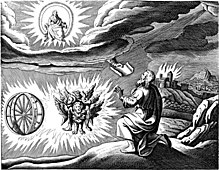Songs of the Underground Railroad
[1] The song's title is said to refer to the star formation (an asterism) known in America as the Big Dipper and in Europe as The Plough.
Douglass's observations here likewise do not serve as clear evidence of the successful use of coded song lyrics to aid escaping slaves; he is writing here only of his small group of slaves who are encouraging each other as they finalize their plans to escape, not of widespread use of codes in song lyrics.
At the beginning of this same paragraph, he writes that the slave owner may very well have seen through the simple code they were using: "I am the more inclined to think that he suspected us, because... we did many silly things, very well calculated to awaken suspicion."
Some authors who believe the song held instructions for escaping slavery admit the ephemeral nature of oral history, often using such phrases as "supposed", "according to folklorists", and "gospelologists cite", to preface their statements.
[14] The theory perhaps developed from the expansion of a folktale[15][16] found in John A. Lomax's 1934 book American Ballads & Folk Songs.
In his preface to "Foller de Drinkin' Gou'd", page 227 in his section on reels, he quotes a story from H.B Parks: "One of my great-uncles, who was connected with the railroad movement, remembered that in the records of the Anti-Slavery Society there was a story of a peg-leg sailor, known as Peg-Leg Joe, who made a number of trips through the South and induced young Negroes to run away and escape...
The main scene of his activities was in the country north of Mobile, and the trail described in the song followed northward to the headwaters of the Tombigbee River, thence over the divide and down the Ohio River to Ohio... the peg-leg sailor would... teach this song to the young slaves and show them the mark of his natural left foot and the round hole made by his peg-leg.


